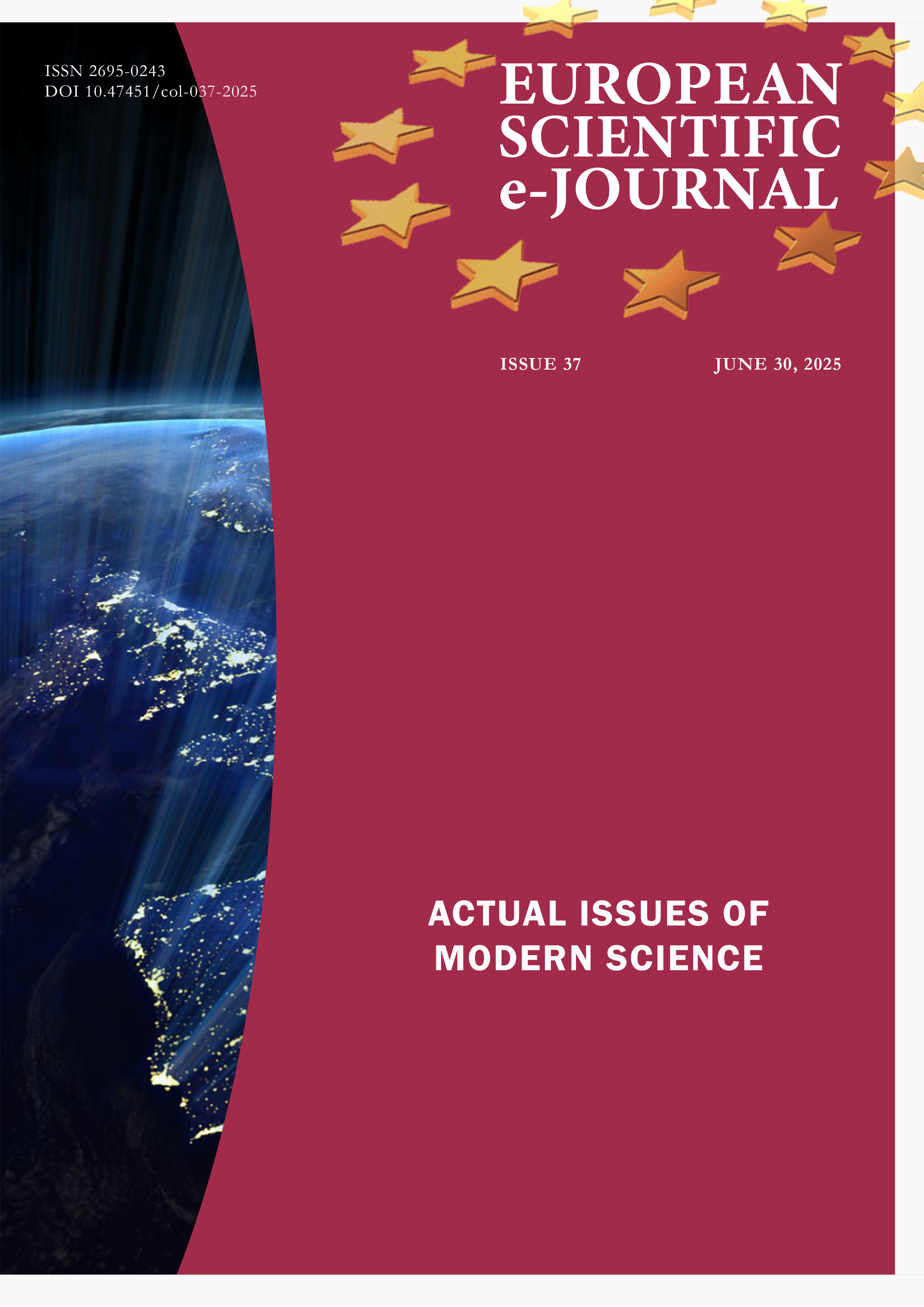Protecting Ukraine’s Critical Infrastructure from Drone Threats: The Role of Security and Defence Forces
DOI:
https://doi.org/10.47451/mil2025-04-01Keywords:
critical infrastructure protection, crdrone strikes, regulatory gaps, interagency coordinationAbstract
In the current conditions of the growth of technological threats, the problem of protecting critical infrastructure (CI) facilities from UAVs is gaining particular importance. The growing use of UAVs in various fields, namely, military conflicts, intelligence activities, terrorist attacks and sabotage, creates new challenges for the national security systems of Ukraine. In the context of the ongoing aggression against Ukraine, uncrewed aerial vehicles have become one of the key means of conducting combat operations, reconnaissance, and sabotage activities. The study examines the growing threat of uncrewed aerial vehicles (UAVs) to Ukraine’s critical infrastructure (energy, transport, defence) amid ongoing hybrid warfare. UAVs are increasingly used for strikes, reconnaissance, and sabotage, demanding urgent improvements in detection, neutralisation, and legal frameworks. The research analyses technical solutions (electronic warfare, AI-driven systems), regulatory gaps, and interagency coordination challenges. Findings highlight the need for a multi-layered defence combining electronic countermeasures, air defence, and cyber capabilities, alongside updated laws to regulate UAV use. International cooperation and advanced technologies (swarm interceptors, sensor networks) are identified as critical for resilience. The study proposes legislative reforms, enhanced interagency synergy, and adoption of global best practices to fortify Ukraine’s infrastructure against evolving drone threats.
Downloads
References
Azarenko, O., Goncharenko, Y., Divizinyuk, M., Kamyshentsev, G., & Farrakhov, O. (2024). Some aspects of the classification of unmanned aerial vehicles in the interests of protecting critical infrastructure. InterConf, 193, 624–637. (In Ukr.). https://doi.org/10.51582/interconf.19-20.03.2024.060
Gerasymenko, O. (2024). Threats to critical infrastructure facilities of Ukraine under martial law. Scientific Bulletin of Uzhhorod National University. Series: Law, 83(3), 257–263. (In Ukr.). https://doi.org/10.24144/2307-3322.2024.84.3.39
Havrys, A., Fillipova, V., & Tur, N. Y. (2024). Informative analysis systems protection objects critical infrastructure during the period actions military state. Bulletin of the Lviv State University of Life Safety, 30, 173–187. (In Ukr.). https://doi.org/10.32447/20784643.30.2024.17
Kazmiruk, S., Leonov, B., & Omelyan, O. (2024). Ensuring cybersecurity of critical infrastructure facilities based on the use of artificial intelligence in military conditions. Legal Scientific Electronic Journal, 6, 201–205. (In Ukr.). https://doi.org/10.32782/2524-0374/2024-6/49
Krivtsun, V., & Golushko, S. (2024). Analysis ways and means countermeasures unmanned flying devices and directions their improvement. Journal of Scientific Papers Social Development and Security, 210–222. (In Ukr.). https://doi.org/10.33445/sds.2024.14.4.17
Lenkov, S., Kryvtsun, V., Miroshnichenko, O., Golushko, S., & Koltsov, R. (2023) Analysis of the state of development of the issue of protection of critical infrastructure facilities using engineering ammunition. Underwater Technologies Industrial and Civil Engineering, 81–91. (In Ukr.). https://doi.org/10.32347/uwt.2023.13.1803
Morkvin, D., & Pershina, K. (2022). Novelties of legislation and modern trends in regulatory and legal support for the protection of critical infrastructure facilities by units of the National Guard of Ukraine. Legal Scientific Electronic Journal, 10, 444–447. (In Ukr.). https://doi.org/10.32782/2524-0374/2022-10/109
Nashivochnikov, O. (2024). Experience of using unmanned aircraft in the Russian-Ukrainian armed conflict (2014-2018). Collection of Scientific Papers of the Center for Military Strategic Research of the National Defense University of Ukraine, 2(81), 124–129. (In Ukr.). https://doi.org/10.33099/2304-2745/2024-2-81/124-129
Plahotniuk, R. (2023). Conceptual principles for improving interaction between authorized bodies in the field of critical infrastructure protection. Problems of Modern Transformations. Series: Law, Public Management and Administration, 7. (In Ukr.). https://doi.org/10.54929/2786-5746-2023-7-01-17
Shaptala, S., Romanenko, E., & Khraschevskiy, R. (2023). Using lasers to counter unmanned aerial vehicles. Science and Technology Today. Series: Technology, 11(25), 617–629. (In Ukr.). https://doi.org/10.52058/2786-6025-2023-11(25)-617-629
Shumygai, O., & Ermolenko, O. (2020). Current state of multifunctional means and complexes of electronic warfare. Collection of scientific works of the State Research Institute of Testing and Certification of Armaments and Military Equipment, 3(5), 119–125. (In Ukr.). https://doi.org/10.37701/dndivsovt.5.2020.14
Slobodska, I., & Yukhymovych, M. (2023). Legal regulation using unmanned aircraft devices in civil aviation Ukraine. Legal Bulletin, 1, 112–126. https://doi.org/10.18372/2307-9061.65.17036
Tsapura, M. (2023). Analysis of electronic warfare systems against unmanned aerial vehicles: qualification work for the degree of Master in the specialty “125 – Cybersecurity” Ternopil: TNTU. (In Ukr.) http://elartu.tntu.edu.ua/handle/lib/43363
Yarosh, S., & Guriev, D. (2021). Justification of the possibility of using modern, advanced and promising weapons to combat unmanned aerial vehicles in the anti-aircraft missile forces group. Science and Technology of the Air Forces of the Armed Forces of Ukraine, 3(44), 88–100. https://doi.org/10.30748/nitps.2021.44.10
Yerylkin, A. G., Guriev, D. O., Karlov, D. V., Korobetsky, O. V., & Shevchenko, Y. A. (2022). Review and analysis of world experience in combating strike unmanned aircraft. Science and Technology of the Air Forces of the Armed Forces of Ukraine, 4(49), 15–22. (In Ukr.). https://doi.org/10.30748/nitps.2022.49.02
Published
Issue
Section
License
Copyright (c) 2025 European Scientific e-Journal

This work is licensed under a Creative Commons Attribution 4.0 International License.
The European Scientific e-Journal (ESEJ) is an open access journal. Articles are available free of charge as PDF files on the website of the European Institute for Innovation Development. PDF files can be previewed with Acrobat Reader from www.adobe.com.
All articles of the “Tuculart Student Scientific” are published under a Creative Commons Attribution 4.0 Generic (CC BY 4.0) International license.
According to the Creative Commons Attribution 4.0 Generic (CC BY 4.0) International license, the users are free to Share — copy and redistribute the material in any medium or format for any purpose, even commercially (the licensor cannot revoke these freedoms as long as you follow the license terms).
Under the following terms:
- Attribution — You must give appropriate credit, provide a link to the license, and indicate if changes were made. You may do so in any reasonable manner, but not in any way that suggests the licensor endorses you or your use.
- No additional restrictions — You may not apply legal terms or technological measures that legally restrict others from doing anything the license permits.


